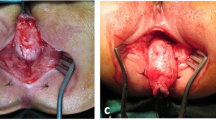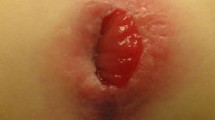Abstract
Twelve patients who had a revision posterior sagittal anorectoplasty (PSARP) were evaluated by questionnaire. They were 11 months to 15 years old (median 5 years) at the time of revision surgery. All were born with an intermediate to high anorectal anomaly (ARM) and had ongoing problems of rectal prolapse (3), stenosis (1), faecal incontinence (9), or severe constipation (4). All but 1 had a huge megarectum with a poor anorectal angle and stool impaction, causing overflow incontinence. After revision surgery, marked improvement occurred in 7 and at least some improvement was achieved in the remaining 5. Previous severe constipation resolved in 2 and improved in another 2 children. The number of soiling episodes significantly decreased in 8 patients: while before surgery 8 had been wearing nappies all the time, only 2 use them postoperatively. The anorectal prolapse has resolved in 3 and sensation improved in 5, and as a group, there has been a reduced need for laxatives and rectal washouts. The favourable outcome of our patients confirms that PSARP is an excellent technique for revision surgery, and tapering of a secondary megarectum plus the formation of an anorectal angle can produce clinical improvement, even in more severe forms of ARM.
Similar content being viewed by others
Author information
Authors and Affiliations
Additional information
Accepted: 7 February 2001
Rights and permissions
About this article
Cite this article
Hrabovszky, Z., Dewan, P. Revision anorectoplasty in the management of anorectal anomalies. Pediatr Surg Int 18, 269–272 (2002). https://doi.org/10.1007/s003830100665
Issue Date:
DOI: https://doi.org/10.1007/s003830100665




